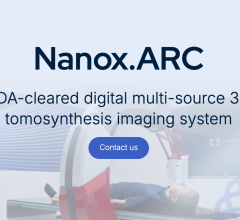
March 29, 2013 — EOS imaging announced that its next-generation sterEOS 3-D imaging software, sterEOS 1.5, has received 510(k) clearance from the U.S. Food and Drug Administration (FDA). The sterEOS 1.5 software was highlighted along with the full EOS Imaging System at the American Academy of Orthopaedic Surgeons (AAOS) Annual Meeting, March 19-23 in Chicago, Ill. The technology is also featured in a paper submitted for the Hip Society Awards, which was presented on Saturday, March 23.
The sterEOS software provides 3-D modeling of the spine and lower limb based on scans taken with the EOS System, and automatically calculates over 100 clinical parameters relevant to diagnosis and surgical planning. The new sterEOS 1.5 offers expanded calculation and analysis, with new capabilities to measure hip implant component position for surgery control and revision. Other key features include 3-D modelling of severe scoliosis (Cobb angle above 50°). It will be made available to existing EOS customers as a software upgrade and will be included in all new system sales.
Marie Meynadier, CEO of EOS imaging, said, “The introduction of hip arthroplasty post-operative 3-D imaging to the EOS System answers growing challenges in orthopedic surgery post-op evaluation. It also provides the first weight-bearing 3-D solution to enhance the understanding and, ultimately, treatment of total hip replacement complications such as dislocations and wear. Ongoing research supports the unique value of EOS in understanding the relation between implant position, pelvic mobility and patient function, therefore improving treatment and patient outcomes in joint arthroplasty.”
One of the first clinical applications of the new features in assessing and monitoring hip implant alignment is discussed in a paper under consideration for the Hip Society Awards, authored by Ian Clarke, Ph.D., of Loma Linda University in Loma Linda, Calif., and Jean-Yves Lazennec, M.D., of La Pitié Salpétrière Hospital in Paris, France. The study, titled “Impingement and Abrasion Risks with MOM Bearings,” reviews how metal-on-metal hip prosthesis wear is related to implant component orientation.
EOS is the first full body, low-dose 3-D imaging system, delivering a radiation dose nine times lower than that of computed radiography X-ray and 20 times lower than basic CT scans.
For more information: www.eos-imaging.com


 December 03, 2025
December 03, 2025 









